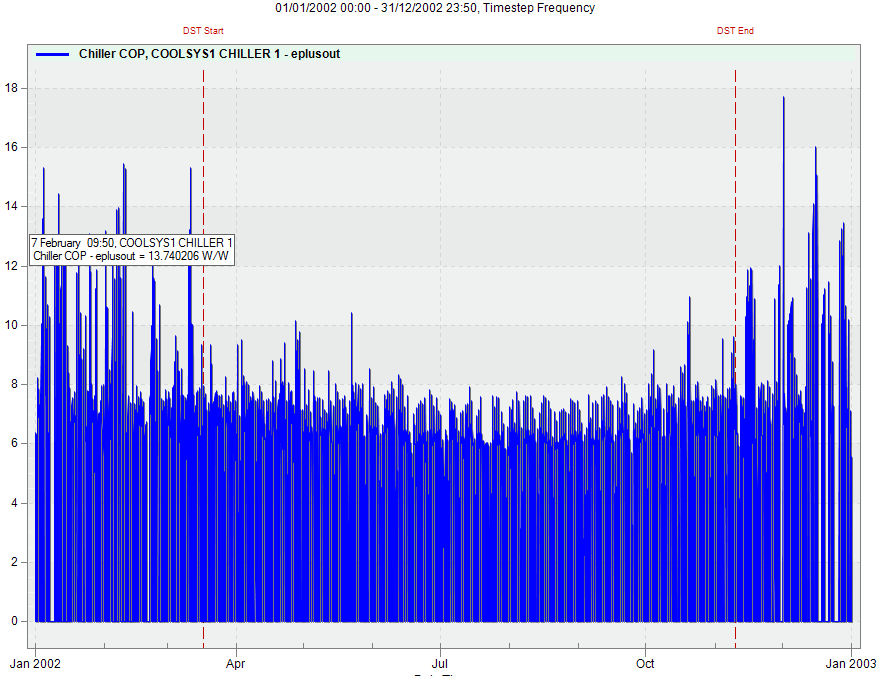Higher COP values then reference COP
For the annual simulation using Reference Large office building, the annual simulation gives high COP values during winter season than summer. The chiller data and curves are not modified and are similar as the chiller.idf file included in EnergyPlus. 
I do not have chiller performance data of my own, hence need to rely on the available chiller curve. The reference chiller COP is set to 5.5 for Chiller:ReformulatedEIR. Even in the most optimally loaded chillers, the COP should not cross 5.5. Any suggestions what could be done to get real like COP's. Or any other chillers and curves that are more accurate in the range of 100-300 tr for Ice storage and CW storage? Chiller - ReformEIRChiller Carrier 19XR 1259kW/6.26COP/Vanes EIRFPLR



